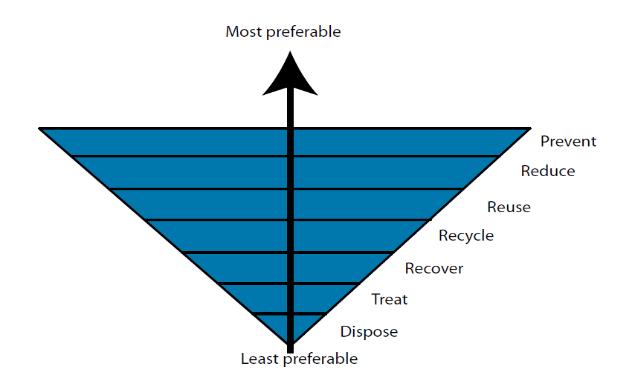Since 2003, FV Hospital has prided itself on being one of the most renowned international hospitals in Vietnam, and as part of its efforts in continuing to meets strict international standards, the hospital has implemented a detailed environmental management scheme for the safety of its patients, visitors and staff. FV has followed evidence based industry specific practices in the following areas; the management of air and water quality within the hospital, the effective control of infection in solid, liquid and gaseous waste, as well as the strict quality control in the cleaning of both the hospital and medical equipment. FV Hospital’s approach in ensuring that international quality safety standards are followed in all areas has been recently internationally recognised with accreditation by the Joint Commission International (JCI) in both 2016 and 2019.
The management of waste in FV Hospital is an integral part in the hospital’s environmental management scheme. The basis of the programme follows the guidelines of the Ministry of Health (MOH) and the Ministry of Natural Resources and Environment (MONRE), Joint Circular No. 58/2015. The waste management programme follows three fundamental principles:
- REDUCE
- RE-USE
- RECYCLE
FV’s staff are trained to follow the matrix detailed below to generate the least amount of waste.

Managing Hospital Waste with Hazardous Elements, mainly dealing with solid waste, is by far the most challenging. Such waste would include sharp items (needles, surgical blades, and saws), anatomical waste (tissues, human organs, foetus, swabs, containers, blood from the body from isolation wards), expired pharmaceutical products, container containing toxic cytotoxic substances, batteries, print cartridges, fluorescent bulbs, lubricants and others. In addition there is Hospital Waste without Hazardous Elements, which includes waste from the kitchen, garden, domestic and paper waste, and non-hazardous items. To address both of these categories, FV Hospital implements a four step process:
- Step 1 – Classification
- Step 2 – Collection
- Step 3 – Storage
- Step 4 – Disposal
CLASSIFICATION
Waste created in the hospital is categorized into the following groups, which each have their own separate processes, precautions, colour codes and required personal protective equipment (PPE):
A. Hospital Waste with Hazard Elements
- Infectious Sharp Waste
- Non-Infectious Sharp Waste
- Hazardous Waste
B. Hospital Waste without Hazard Elements
- Easy Decomposed Organic Waste
- Difficult Decomposed Domestic Waste
- Recycled Waste
Waste bins within the hospital are divided into the six categories of waste listed above and are colour coded accordingly. Yellow for infectious and non-infectious sharp waste; black for hazardous waste; green for easy decomposed organic waste; blue for difficult decomposed domestic waste; and white for recycled waste. In the life cycle of the waste, the same colour is also used for the plastic bags at the points of creation, transportation and storage.
COLLECTION
At all waste generating locations, such as consultation rooms, patient rooms, nursing stations, office areas, kitchens and toilets, operation and recovery rooms and others, waste bins with plastic bags with the appropriate colour are placed and signage is given in multiple language to direct staff on the segregation of waste.
Staff are trained during their orientation and periodically throughout the year on the right processes to follow in the segregation of waste. The plastic bags are collected at set schedules (or when they are full) by trained staff using proper PPE. Waste bags are fastened, ensured that they are filled till the earmarked border, labelled, and carried vertically by colour coded transportation trollies to the waste storage area.
STORAGE
The temporary waste storage area in the hospital is located outside the building, far away from all clinical activities. The waste storage area is divided into five areas for each individual type of waste, with the hazardous (black) waste area being locked. All yellow plastic bags are stored in a temperature-controlled area (12 degrees or less).
The waste is stored in this location temporarily before being collected by an authorized organisation for disposal.
DISPOSAL
Excluding hazardous (black) and recycled (white), waste is collected daily by the organisation, Urban Environment Company, which is authorized by the government. For the hazardous and recycled waste, they are collected when the storage area is almost full following the regulations of the MOH and the MONRE.
All types of waste are collected by trained staff with proper PPE and are transported to their storage facilities, where infectious waste (yellow) are destroyed by burning at 1200 degree Celsius to completely eliminate the risks of infection.
In addition to solid waste, FV Hospital produces liquid waste from patient rooms, kitchens and public toilets. The liquid waste is treated by FV’s own Waste Water Treatment Plant (WWTP) which is located inside the hospital. The waste water is treated in multiple stages of aerobic biological treatment before it is discharged to the outside drainage. The quality of the discharge water is checked quarterly following the national standard, QCVN 28:2010, implemented by the MONRE, which covers fifteen parameters, checking microbiology, chemical and heavy metal traces, among others.
Radioactive Waste Management
The Nuclear Medicine Department produces both solid and liquid radioactive waste. The solid nuclear waste is kept in an enclosed location, where it waits for their half-life to be over, when then it is discarded as infectious waste. The liquid radioactive waste is temporarily stored in a special tank and released to WWTP after the half-life of the radioactive material is over. During disposal, the radiation level of each type of waste is checked and documented by the Radiation Safety Officer of the hospital.
(Half-life – the time required for the decaying of the radioactive property of a chemical to be at half its capacity)
Air Quality in FV Hospital
FV Hospital ensures that all air that comes into the hospital is passed through an array of filters for purification. In some critical areas, such as the operating rooms, isolation areas and testing areas, the air is passed through a high efficiency particulate air-filter (HEPA) to ensure the removal of 99.95% (European Standard) or 99.97% (ASME, U.S.) of particles with diameters equal to 0.3 μm. The air samples of all patient areas (inpatient and outpatient) including administrative offices, and kitchens are monitored on a periodic basis to ensure that the air that we breathe is free from all impurities and suspended particles.
Environmentally Friendly Practices
FV Hospital have also implemented the use of:
- Biodegradable plastic bags in all areas of its operation to protect the environment. The biodegradable bags used by the hospital have an even higher degradable level, 70%, when compared to the regulations imposed by the Ministry of Natural Resources and Environment.
- High-quality paper cups and lunchboxes made from eucalyptus bark to contribute towards environment safety.

 Vi
Vi 












